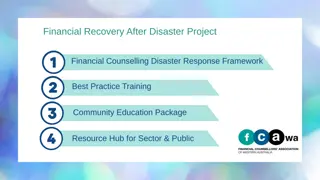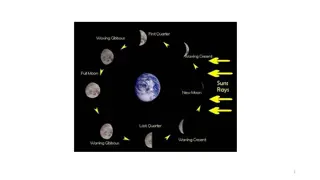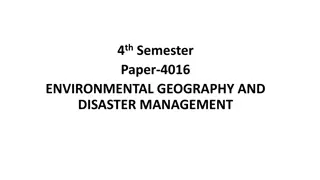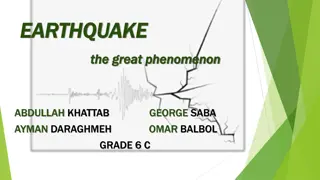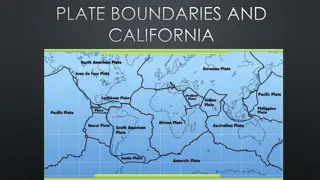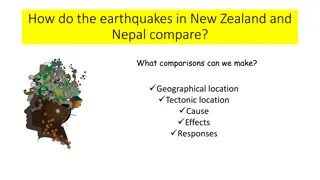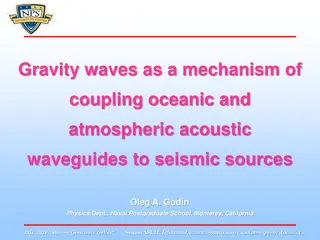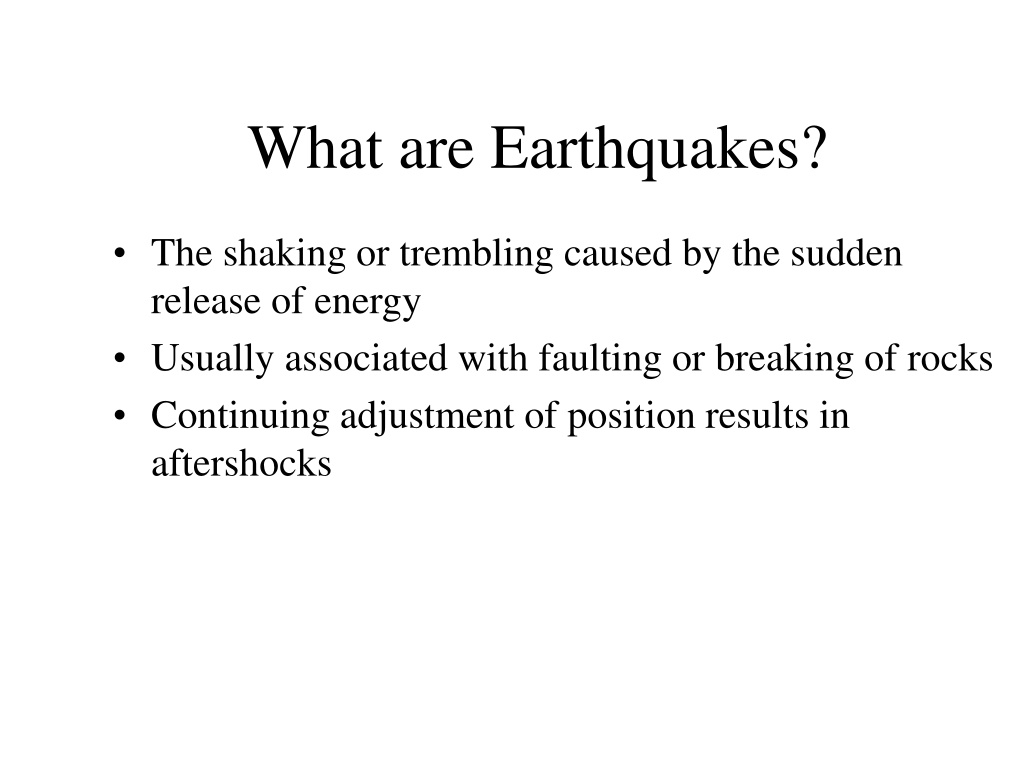
Understanding Earthquakes and Their Impacts
Earthquakes are caused by the sudden release of energy resulting in shaking and trembling. The Elastic Rebound Theory explains how energy is stored in rocks and released during ruptures. Seismographs record earthquake events, and earthquakes mainly occur in specific regions globally. Economic and societal impacts of earthquakes include building collapses, fires, tsunamis, and ground failures. Seismic waves play a crucial role in understanding earthquake behavior, with body waves (P and S) and surface waves (R and L) being key components.
Download Presentation

Please find below an Image/Link to download the presentation.
The content on the website is provided AS IS for your information and personal use only. It may not be sold, licensed, or shared on other websites without obtaining consent from the author. If you encounter any issues during the download, it is possible that the publisher has removed the file from their server.
You are allowed to download the files provided on this website for personal or commercial use, subject to the condition that they are used lawfully. All files are the property of their respective owners.
The content on the website is provided AS IS for your information and personal use only. It may not be sold, licensed, or shared on other websites without obtaining consent from the author.
E N D
Presentation Transcript
What are Earthquakes? The shaking or trembling caused by the sudden release of energy Usually associated with faulting or breaking of rocks Continuing adjustment of position results in aftershocks
What is the Elastic Rebound Theory? Explains how energy is stored in rocks Rocks bend until the strength of the rock is exceeded Rupture occurs and the rocks quickly rebound to an undeformed shape Energy is released in waves that radiate outward from the fault
The Focus and Epicenter of an Earthquake The point within Earth where faulting begins is the focus, or hypocenter The point directly above the focus on the surface is the epicenter
Seismographs record earthquake events At convergent boundaries, focal depth increases along a dipping seismic zone called a Benioff zone
Where Do Earthquakes Occur and How Often? ~80% of all earthquakes occur in the circum-Pacific belt most of these result from convergent margin activity ~15% occur in the Mediterranean-Asiatic belt remaining 5% occur in the interiors of plates and on spreading ridge centers more than 150,000 quakes strong enough to be felt are recorded each year
The Economics and Societal Impacts of EQs Damage in Oakland, CA, 1989 Building collapse Fire Tsunami Ground failure
What are Seismic Waves? Response of material to the arrival of energy fronts released by rupture Two types: Body waves P and S Surface waves R and L
Body Waves: P and S waves Body waves P or primary waves fastest waves travel through solids, liquids, or gases compressional wave, material movement is in the same direction as wave movement S or secondary waves slower than P waves travel through solids only shear waves - move material perpendicular to wave movement
Surface Waves: R and L waves Surface Waves Travel just below or along the ground s surface Slower than body waves; rolling and side-to-side movement Especially damaging to buildings
How is an Earthquakes Epicenter Located? Seismic wave behavior P waves arrive first, then S waves, then L and R Average speeds for all these waves is known After an earthquake, the difference in arrival times at a seismograph station can be used to calculate the distance from the seismograph to the epicenter.
How is an Earthquakes Epicenter Located? Time-distance graph showing the average travel times for P- and S- waves. The farther away a seismograph is from the focus of an earthquake, the longer the interval between the arrivals of the P- and S- waves
How is an Earthquakes Epicenter Located? Three seismograph stations are needed to locate the epicenter of an earthquake A circle where the radius equals the distance to the epicenter is drawn The intersection of the circles locates the epicenter
How are the Size and Strength of an Earthquake Measured? Intensity subjective measure of the kind of damage done and people s reactions to it isoseismal lines identify areas of equal intensity Modified Mercalli Intensity Map 1994 Northridge, CA earthquake, magnitude 6.7
How are the Size and Strength of an Earthquake Measured? Magnitude Richter scale measures total amount of energy released by an earthquake; independent of intensity Amplitude of the largest wave produced by an event is corrected for distance and assigned a value on an open-ended logarithmic scale
What are the Destructive Effects of Earthquakes? Ground Shaking amplitude, duration, and damage increases in poorly consolidated rocks
Can Earthquakes be Predicted? Earthquake Precursors changes in elevation or tilting of land surface, fluctuations in groundwater levels, magnetic field, electrical resistance of the ground seismic dilatancy model seismic gaps
Can Earthquakes be Predicted? Earthquake Prediction Programs include laboratory and field studies of rocks before, during, and after earthquakes monitor activity along major faults produce risk assessments
Can Earthquakes be Controlled? Graph showing the relationship between the amount of waste injected into wells per month and the average number of Denver earthquakes per month Some have suggested that pumping fluids into seismic gaps will cause small earthquakes while preventing large ones
This powerpoint was kindly donated to www.worldofteaching.com http://www.worldofteaching.com is home to over a thousand powerpoints submitted by teachers. This is a completely free site and requires no registration. Please visit and I hope it will help in your teaching.





